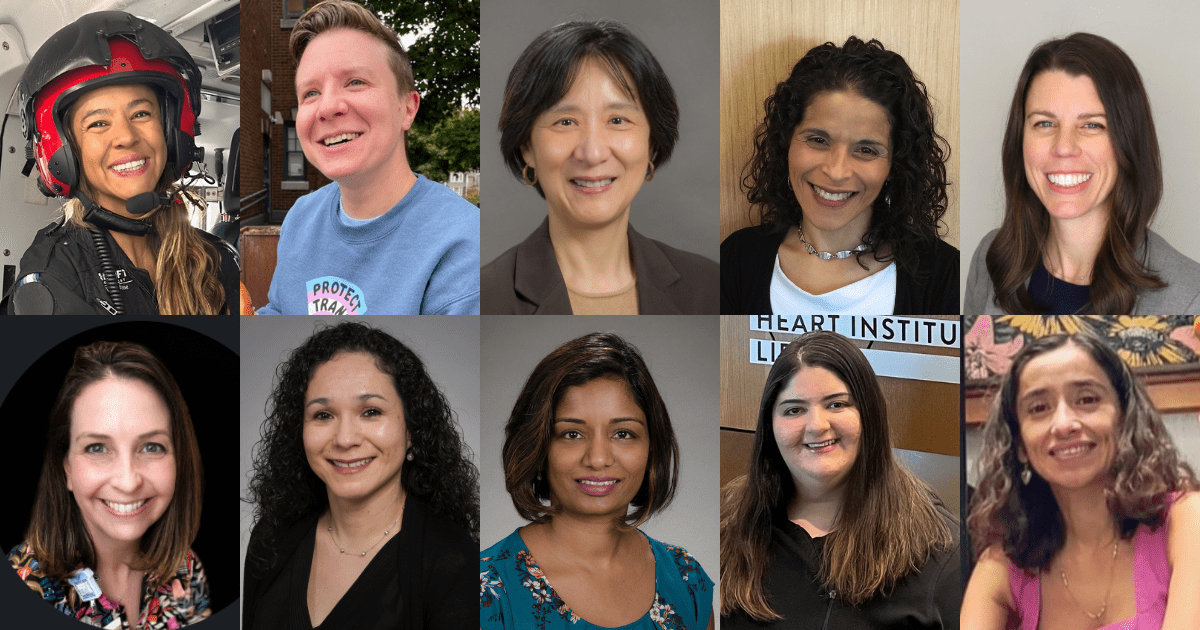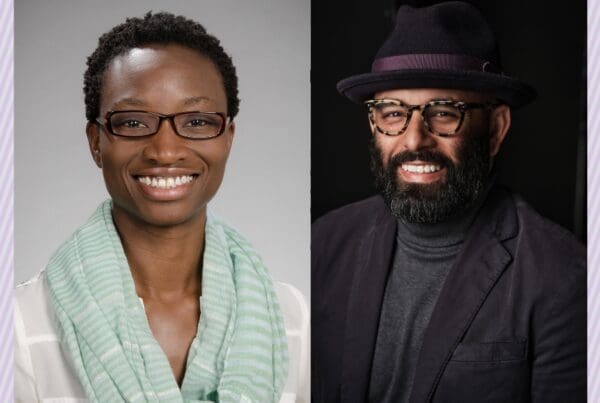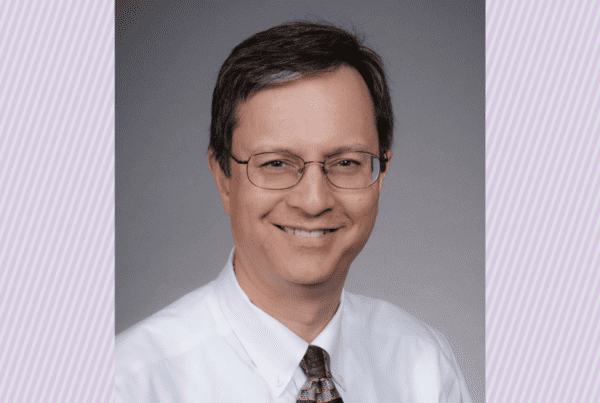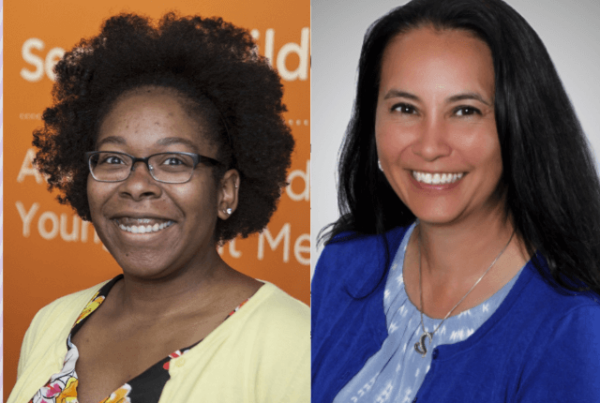In recognition of Women’s History Month, we asked colleagues across UW Medicine about their journey into healthcare and their connection to the 2024 national Women’s History Month theme: Women who advocate for equity, diversity and inclusion. The colleagues featured below illustrate how early influences and experiences can inspire not only careers in science and medicine but compel one to be an advocate for equity, diversity and inclusion in one’s work and life.
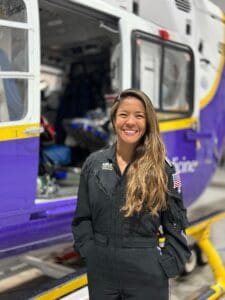
Diana Salazar, RN, BSN, CCRN, CFRN
Diana Salazar, RN, BSN, CCRN, CFRN, (She/Her), Flight Nurse, Airlift Northwest
As a nursing student, I had the opportunity to work in the Trauma Intensive Care Unit at Harborview. I’d see the flight nurses arrive in the helipad and transport patients. “THAT is what I want to do someday,” I thought to myself. Now, I AM a flight nurse for Airlift Northwest, where I get to work with incredibly skilled colleagues and fly patients in and out of beautiful places all over the Northwest.
Growing up, I had no idea that flight medicine existed. I encourage UW Medicine to support programs in marginalized communities that introduce careers and fields to girls and young women who haven’t historically had access to them. As a flight nurse and a woman of color, I’d love to see more diversity in flight medicine. I want to be an advocate in programs that encourage Black, Indigenous and people of color to pursue careers in advanced nursing and flight medicine.
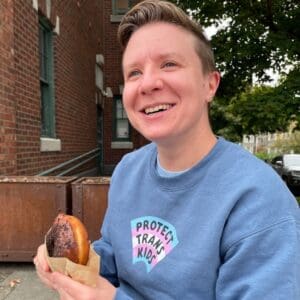
Genya Shimkin, MPH
Genya Shimkin, MPH, (She/They), Assistant Teaching Professor, Department of Family Medicine
As a high schooler in upstate New York, I volunteered for a local HIV/AIDS organization, mostly because it was the first space where I could find queer adults; I was desperate for models and community. That led me on a path to sexual health advocacy. Now, a lot of my work focuses on queer/trans health, specifically healthcare access and health equity.
At UW Medicine, we need to look at structural, institutional and interpersonal systems to tackle sexism at all levels. I’d love to see UW Medicine offer health insurance benefits that cover fertility and assisted reproduction interventions such as IVF. I’d also love to see fully paid parental leave, which disproportionately impacts women and birthing parents.
I’ve been thinking about inclusion a lot recently. Though I was assigned female at birth and socialized as a girl, I’ve always been gender non-conforming and genderqueer. As I’ve grown into my gender identity over the last decade, it’s been harder and harder to find a home for myself in concepts of “woman” and “womanhood.” This has come into stark relief recently as I’m now seven months into my first pregnancy, which is such a gendered experience. Now that I’m visibly pregnant, it’s clear people see me and read me as a woman, even though my gender identity hasn’t changed. “Woman” should be an inclusive category, never an exclusive one.

Lorena Alarcon-Casas Wright, MD
Lorena Alarcon-Casas Wright, MD, (She/Her/Ella), Clinical Associate Professor, Division of Endocrinology, Department of Medicine
I chose medicine as a career because my mom is a retired primary care provider, so as a child (and now), I wanted to be like her. When I moved to Seattle for my endocrinology fellowship, I learned about diabetes and healthcare disparities in the Latinx community, the lack of Latinx doctors and underrepresentation of Black, Indigenous and people of color in healthcare. Being bilingual and bicultural myself, I wanted to do something about it. I’ve been fortunate to have the support of leaders in my division. I’m the founder and director of the UW Latinx Diabetes clinic, within the UW Diabetes Institute. We aim to decrease diabetes disparities by providing accessible culturally appropriate care. I’m also the equity, diversity and inclusion director in my division and a member of the UW Department of Medicine Diversity Council.
During my fellowship, I also saw gender affirming care disparities for gender diverse individuals. I’m now devoted to diabetes and gender affirming care, where I’m humbled and honored to be part of my patients’ journey to become their true selves.
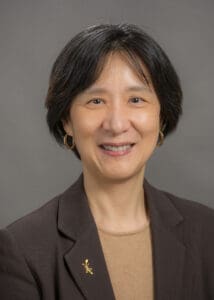
Rong Tian, MD, PhD
Rong Tian, MD, PhD (She/Her), Mitochondria and Metabolism Center, Department of Anesthesiology & Pain Medicine and Department of Bioengineering
From an early age, figuring out how things work seemed natural to me. My mother is a biochemistry professor; her influence swayed me toward life science. I was interested in immunology during my early years in medical school, but my professor in Cardiology captured my imagination of cardiovascular science. My choice to study energy metabolism of the heart was driven by the curiosity of how the heart could secure the energy supply for continuous beating throughout one’s lifetime. The surge of interest in cell metabolism has led to opportunities; I have founded and directed the Mitochondria and Metabolism Center at the UW School of Medicine for the past 15 years. It’s an exciting time to be in this field and it’s gratifying to train and support the next generation of scientists in our field.
As a woman and a first-generation immigrant (I was born and raised in China), my experience taught me a lot about equity, diversity and inclusion, and I’m turning my experience into advocating for the cause. To give an example: a few years ago, I became editor in chief of the journal of my professional society. It was the first time in the 50+ years history of the journal that a woman and non-white editor took the helm. I’m thrilled by the progress, humbled by the honor and excited about the opportunity to promote equity, diversity and inclusion through a platform like this. True equity takes generational effort and requires everyone’s participation.
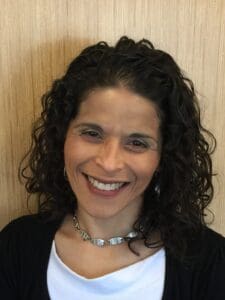
Judith Puzon, MSN, RN
Judith Puzon, MSN, RN, (She/Her), Director of Outpatient Nursing Services, Clinic Network Administration, Valley Medical Center
I sought a career I was passionate about, one that was versatile, would teach me different skills and challenge me to think in creative ways. Nursing does all those things. When I became a nurse, I knew I’d move into leadership one day. I wanted to make a difference in the lives of those I cared for and improve outcomes for underserved communities.
As a young, Puerto Rican woman, I was taught to be proud of who I am and my vibrant and passionate culture. As the first woman in my family to be a college graduate, I encourage everyone to follow their path and believe in themselves. The road as a woman can be difficult, and when you add being a woman of racial and ethnic heritage, the ascent becomes even more challenging.
It’s why, once I was in nursing, I dedicated myself to serving at-risk populations. I started my journey working for Federally Qualified Health Centers, serving high-risk pregnant monolingual Spanish-speaking moms along with pediatric patients. Eventually, I found Valley Medical Center, which serves southeast King County, where the population life span is 15 years shorter than it is in neighboring counties. In this position, I help decrease barriers to care, helping people live their healthiest lives.

Pavitra Roychoudhury, PhD
Pavitra Roychoudhury, PhD, (She/Her), Research Assistant Professor, Department of Laboratory Medicine and Pathology
With an engineer and an OB/GYN for parents, I grew up tinkering with gadgets on weekends and hearing medical cases discussed at dinner. So it seems natural that I stumbled into the field of biomedical engineering. After getting my undergrad and master’s degrees in Singapore, I packed up my life into two suitcases and came to the States to do my PhD in Bioinformatics and Computational Biology. Here I transitioned from engineering to science, using mathematical models and genomics to study evolution of bacteriophages, which provided a foundation for my postdocs at Fred Hutch and UW. I joined the faculty of UW Medicine’s Virology Division and I love it! Every day is an adventure – new data, talented and dedicated staff, an extensive network of collaborators, inspiring mentors, and the opportunity to use my skills and training to support UW Medicine’s mission of improving the health of the public.
Promoting a welcoming and inclusive environment means acknowledging that people are the product of all their life experiences; life and work are intertwined. For example, I was devastated and forever changed when my son died, and I now recognize grief and its impact on work. Creating a supportive work environment that accommodates the ups and downs of life is important to me.
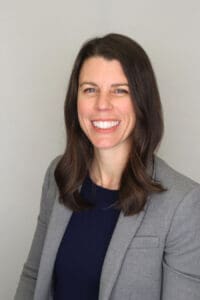
Margaret Sibley, PhD
Margaret Sibley, PhD, (She/Her), Professor of Psychiatry & Behavioral Sciences
I didn’t always know that I wanted to go into the field of mental health. But mental health problems were all around me as I was coming of age, whether it was family members, youth I mentored as a summer camp counselor or peers. When I graduated from college, I kept asking myself, what do you want to do with your life? I had witnessed so much human suffering due to mental health and addiction problems. I decided I wanted a career in service of mental health. I applied to graduate school, was placed with a researcher who studied attention deficit/hyperactivity disorder (ADHD) and learned that ADHD was a common risk factor for many of the struggles I’d witnessed. I then wanted to help unlock the nature of this condition through research.
My work feels most meaningful when I’m able to do, create or communicate something that helps people feel seen and understood. I work with neurodivergent patients and families and aim to create clarity and solutions for them. I see my role as listening to the experiences of those who I directly serve and trying to see patterns in their experiences that can be used to help the larger community.
In addition to making room for neurodiverse people, we can also diversify institutional leadership to include people from under-represented backgrounds. Doing so can protect people from being in a vulnerable position without an advocate that can personally relate to them.
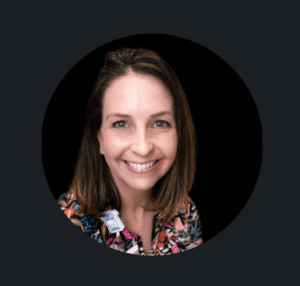
Kellie Hurley, RN, MN, SC
Kellie Hurley, RN, MN, SCRN (She/Her), Associate Administrator Nursing Operations and Clinical Capital Development, Harborview Medical Center
My grandfather was a general surgeon; he died before I had the chance to meet him. I was given an old thank you letter from an incarcerated person on whom my grandfather performed surgery. He thanked him for caring about him when no one else did, treating him like a person, not a prisoner. That letter became the foundation for my passion for caring for the underserved and vulnerable populations. I can do that at Harborview.
An important element of equity, diversity and inclusion is ensuring pathways of career development and opportunity for every role. Within our teams, there may be employees who may feel intimidated or lack the confidence to apply for a new role or ask for training or educational opportunities. Perhaps the team member comes from another country, or their native language is not English. It is our responsibility as leaders to encourage and recommend staff for internal opportunities.
And we must recognize our colleagues’ accomplishments, big and small; whether verbally highlighting a colleague’s contribution in a meeting, or by taking a minute to formally nominate a fellow colleague for an award. Let’s raise each other up.
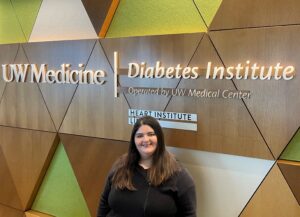
Ixallana Garcia
Ixallana Garcia (She/Her), Medical Assistant, Diabetes Institute
Growing up, I knew I wanted to be in the medical field. My mom dealt with health challenges which opened my eyes to a healthcare system that was lacking. Now, I’m part of the Equity, Diversity and Inclusion Committee to highlight the healthcare disparities faced by the Hispanic/Latin community. As someone of Mexican descent, I understand the struggles this community faces. I strive to make patients feel cared for and understood.
Working at the LatinX Clinic at the Diabetes Institute led to volunteering at LatinX health fairs, where I spread awareness about providers and resources available for diabetes care within the Hispanic/Latin community. I’d like to have more programs like the LatinX clinic in other departments within UW Medicine and further expand into other underrepresented populations.
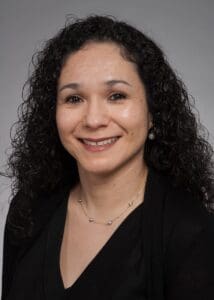
Enedina Rojas Dumas, MSN, RN
Enedina Rojas Dumas, MSN, RN (She/Her), Strategic Outreach Manager – OB/GYN & Pediatric Services, UW Medicine
As the oldest of eight children and of 41 cousins, I did a lot of caring for children. This led me to want to be a pediatric doctor. No one in my family was in healthcare careers, much less a doctor. I wanted to make my big Mexican family proud. I learned while working at UW Medical Center that it was the nurses who did most of the patient care. This diverted my plan; I attended UW Nursing School. I also graduated with a degree in American Ethnic Studies. I combined the two degrees to study healthcare disparities in Black, Indigenous and people of color obstetric patients, which propelled me into Women’s Health as my career path.
In addition to serving on UW Medical Center’s Equity, Diversity and Inclusion Committee, UW Medicine’s Cultural Observances Implementation Sub-Committee and being an EDI Foundational Peer Trainer for the Office of Healthcare Equity, I also co-direct UW Nurse Camp. Nurse Camp is a program that mentors high school Black, Indigenous and people of color and low socio-economic students. I do this work to ensure our workforce mirrors that of the patients. Our patients need to feel they are understood and welcomed. We need diversity in all UW Medicine roles, and it’s important that employees of diverse backgrounds also feel understood and welcomed in the workplace.
Editor’s note: Thank you to the UW Medicine employees who have taken the time to share their experiences. When we use “women” and “girls” in this post, we recognize that there is a spectrum of gender identities.
Any information or opinions shared in this article are personal views and do not represent those of the University of Washington or UW Medicine in any way, shape, or form.
